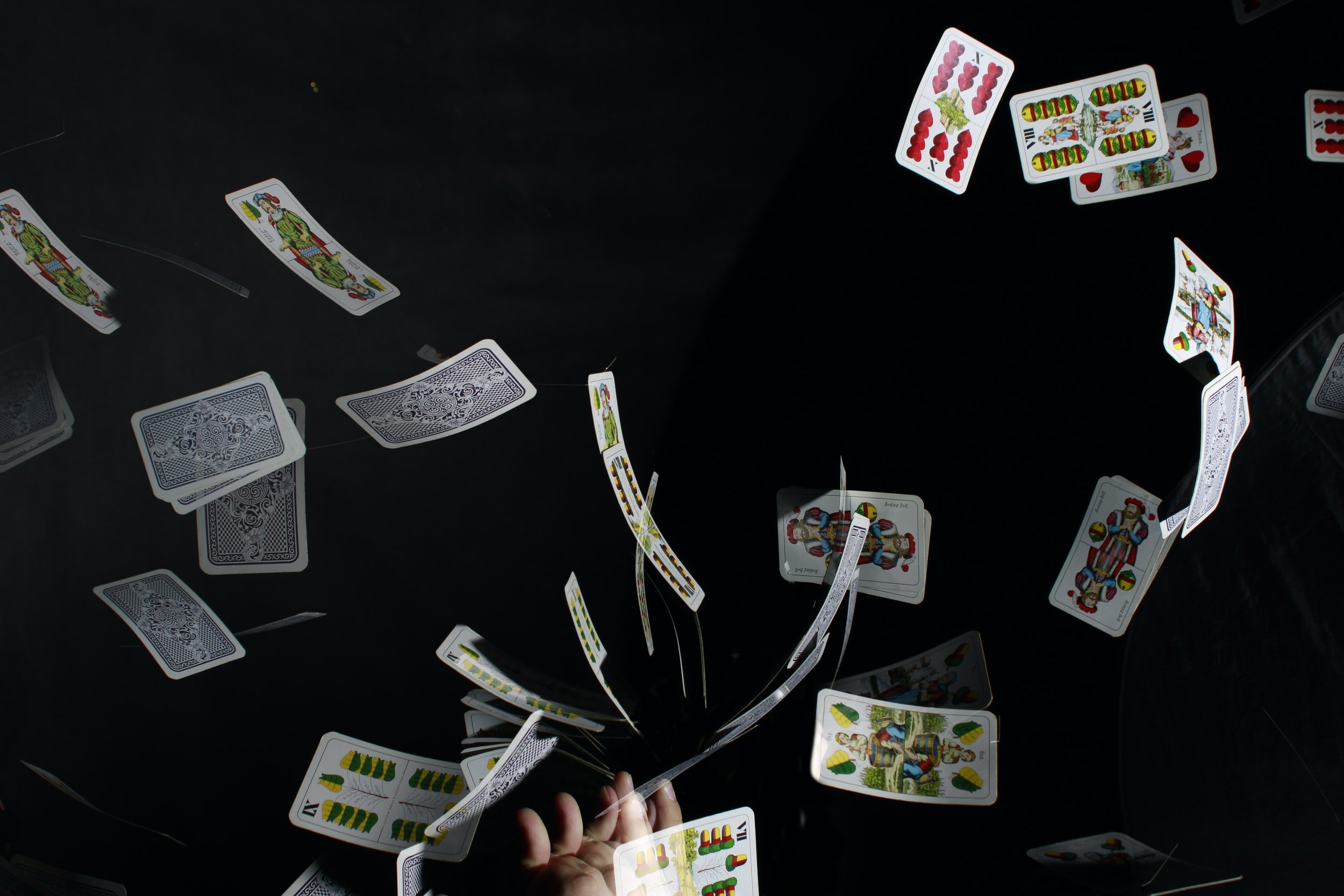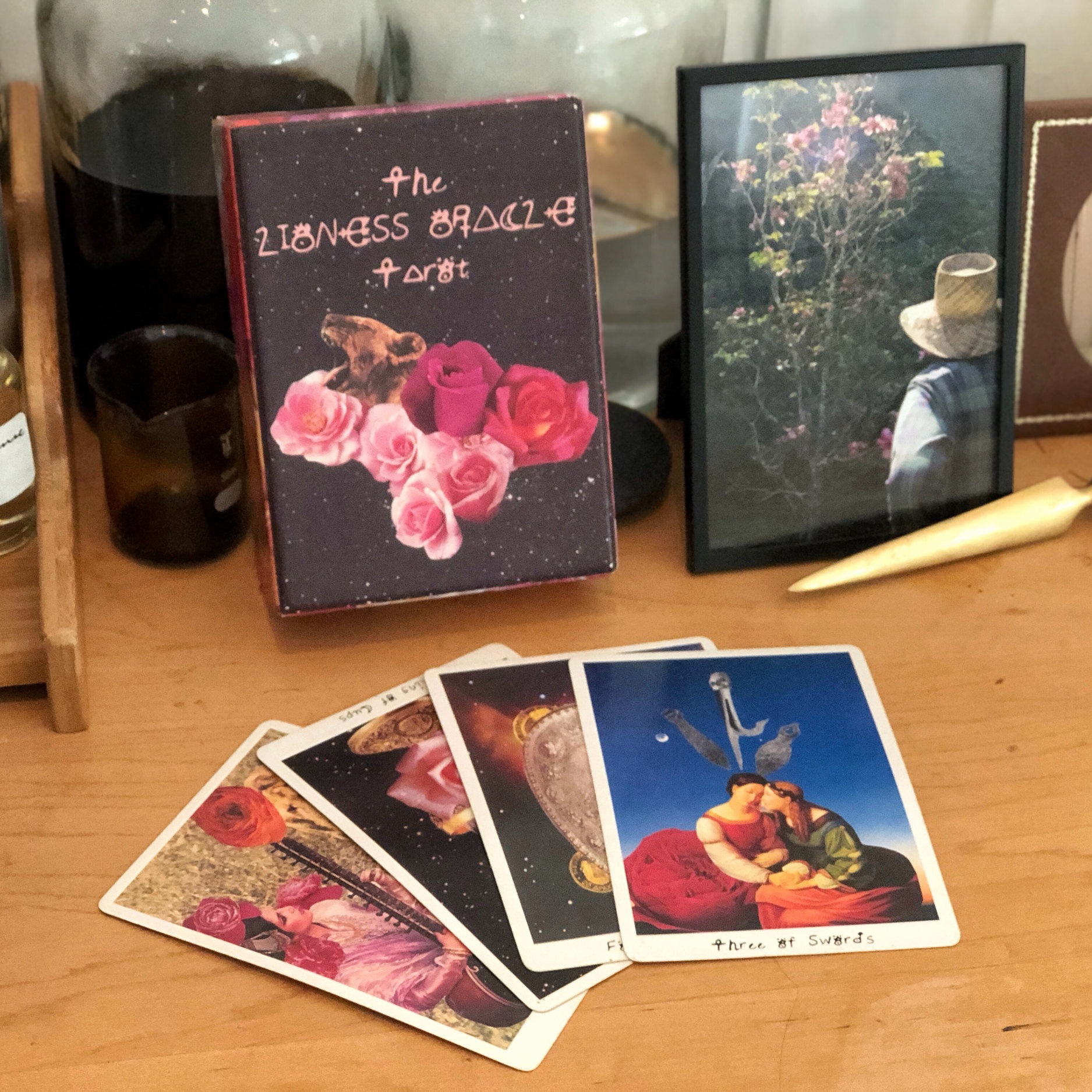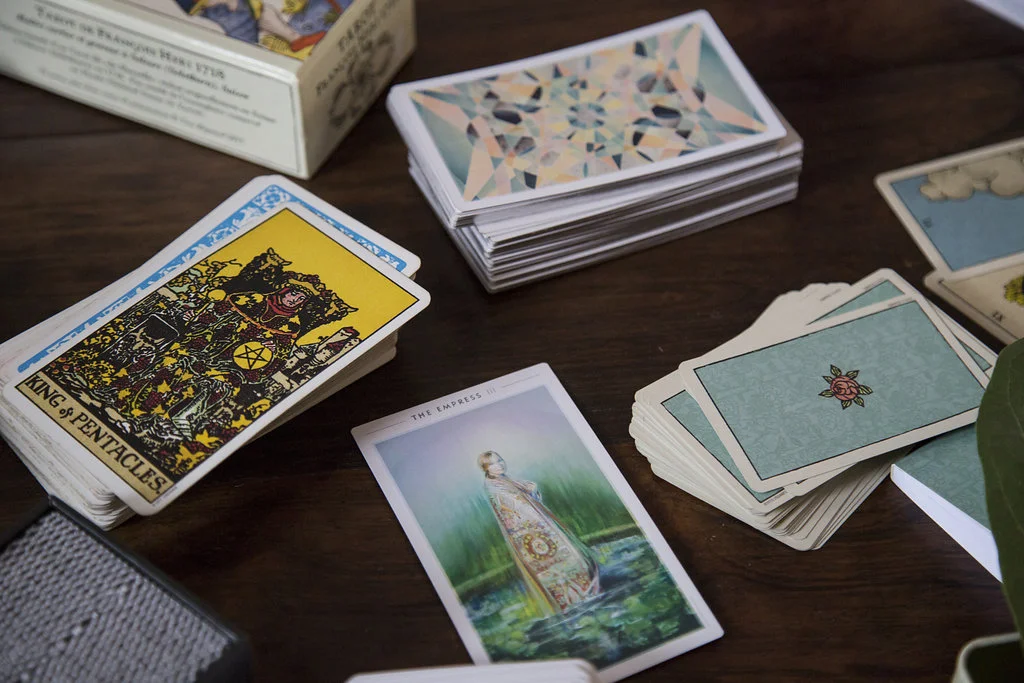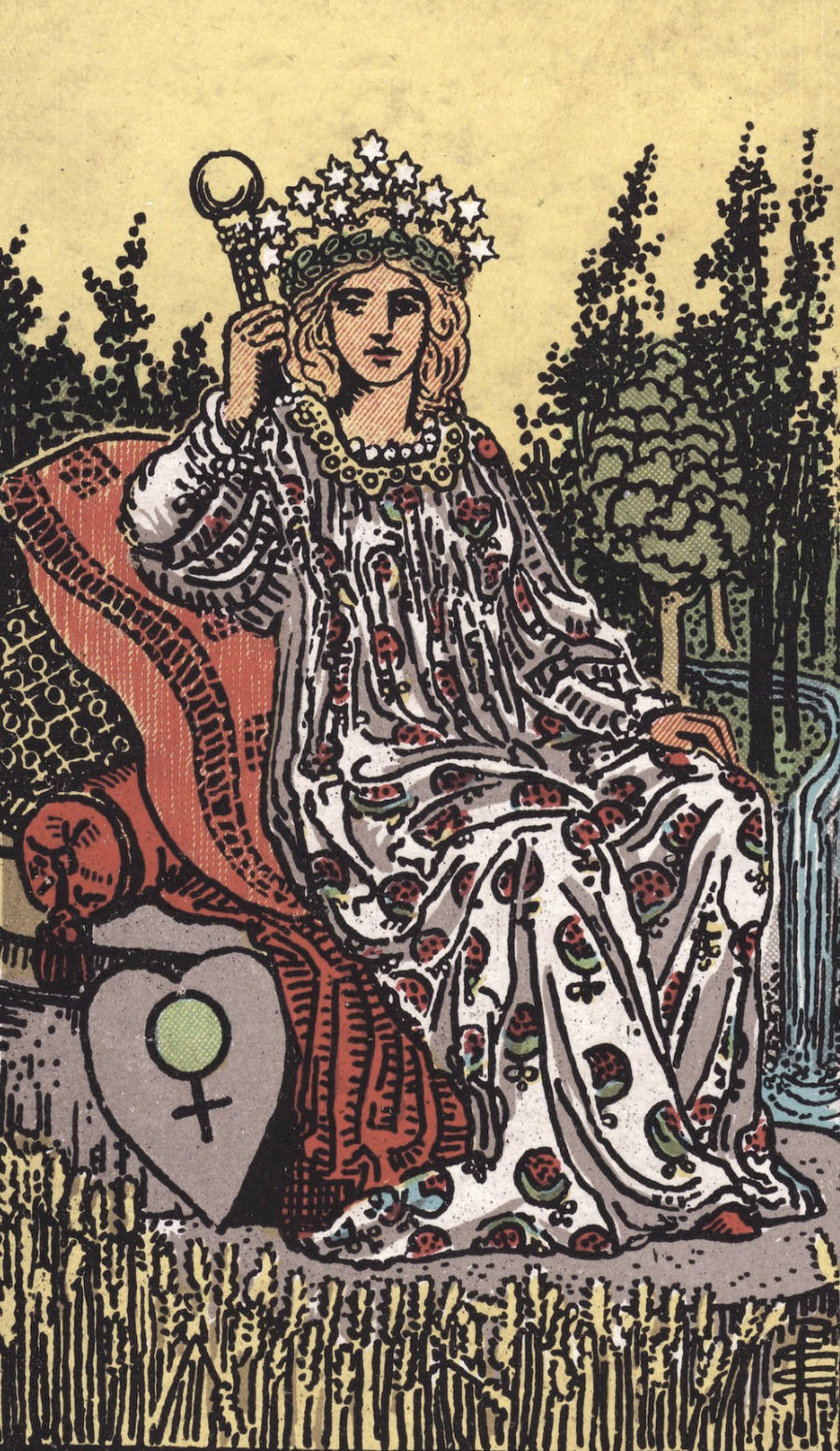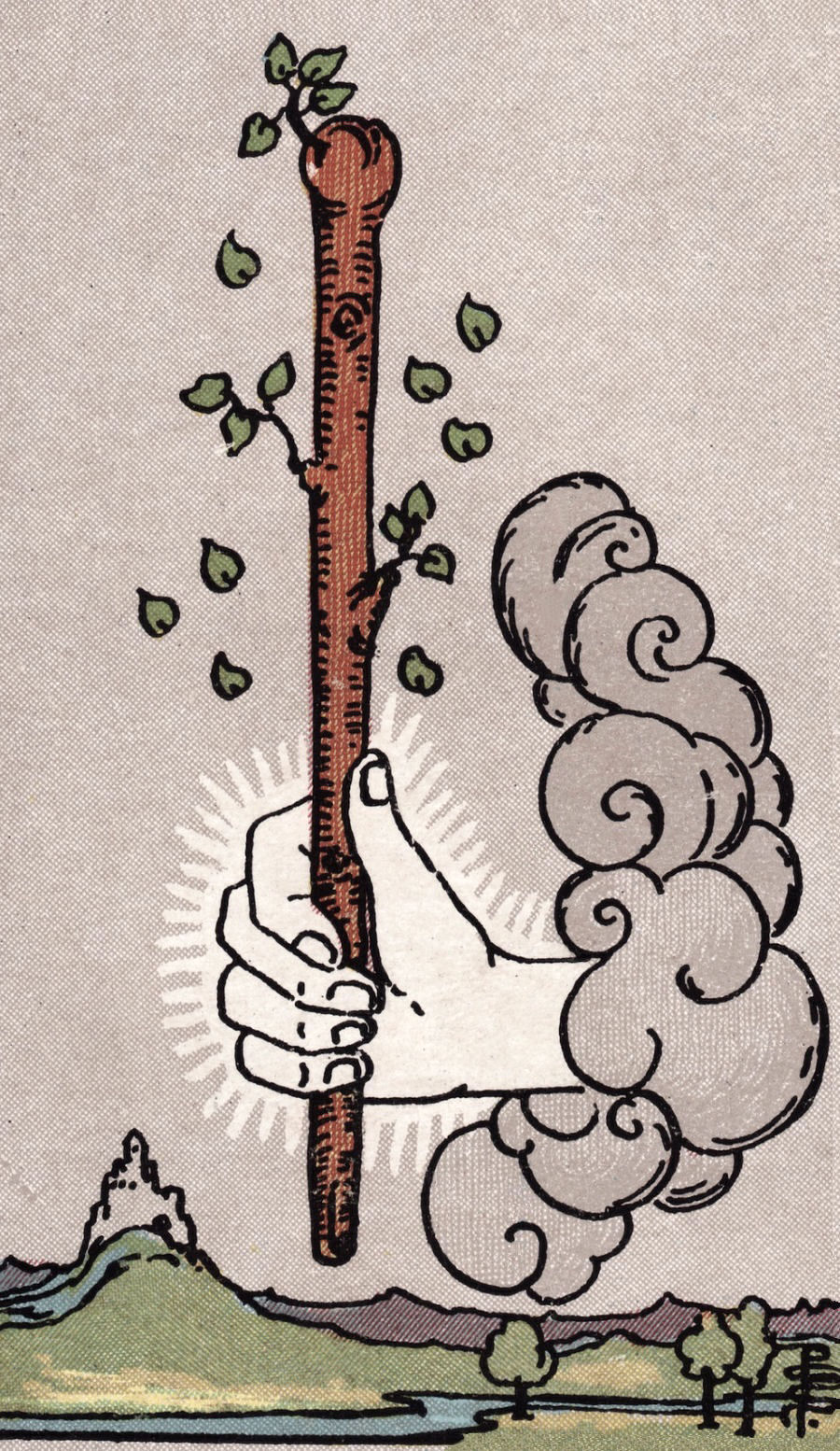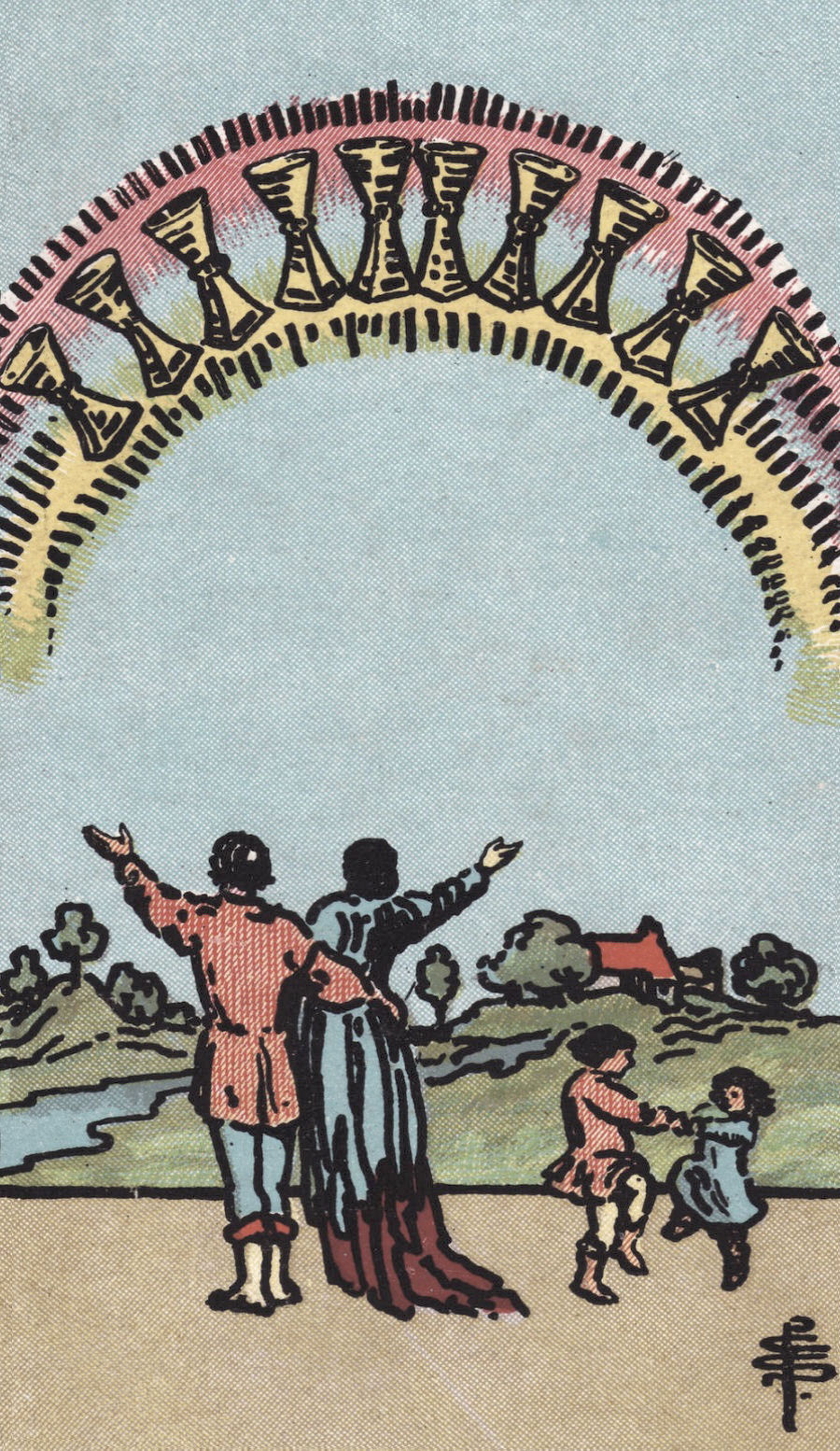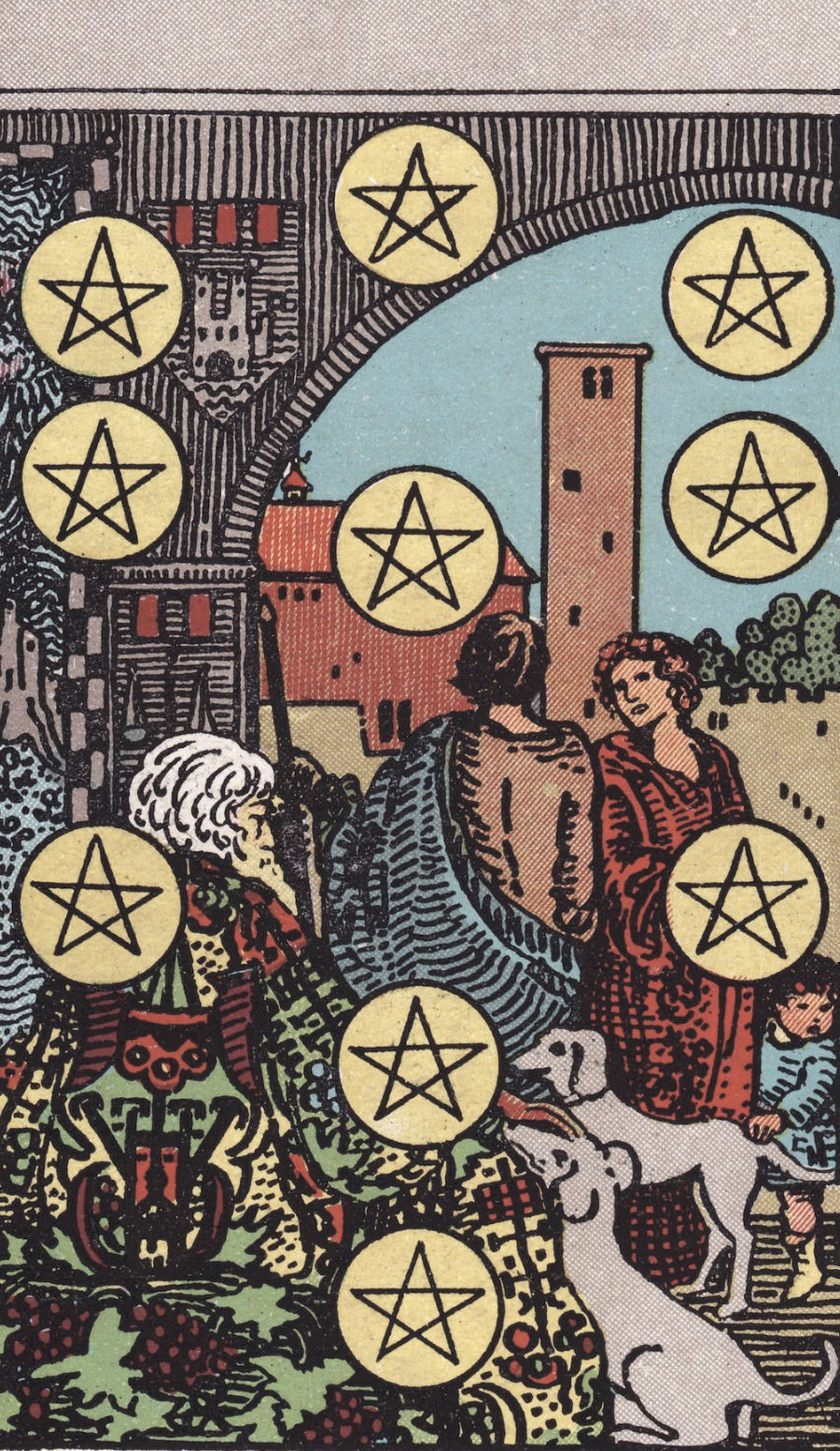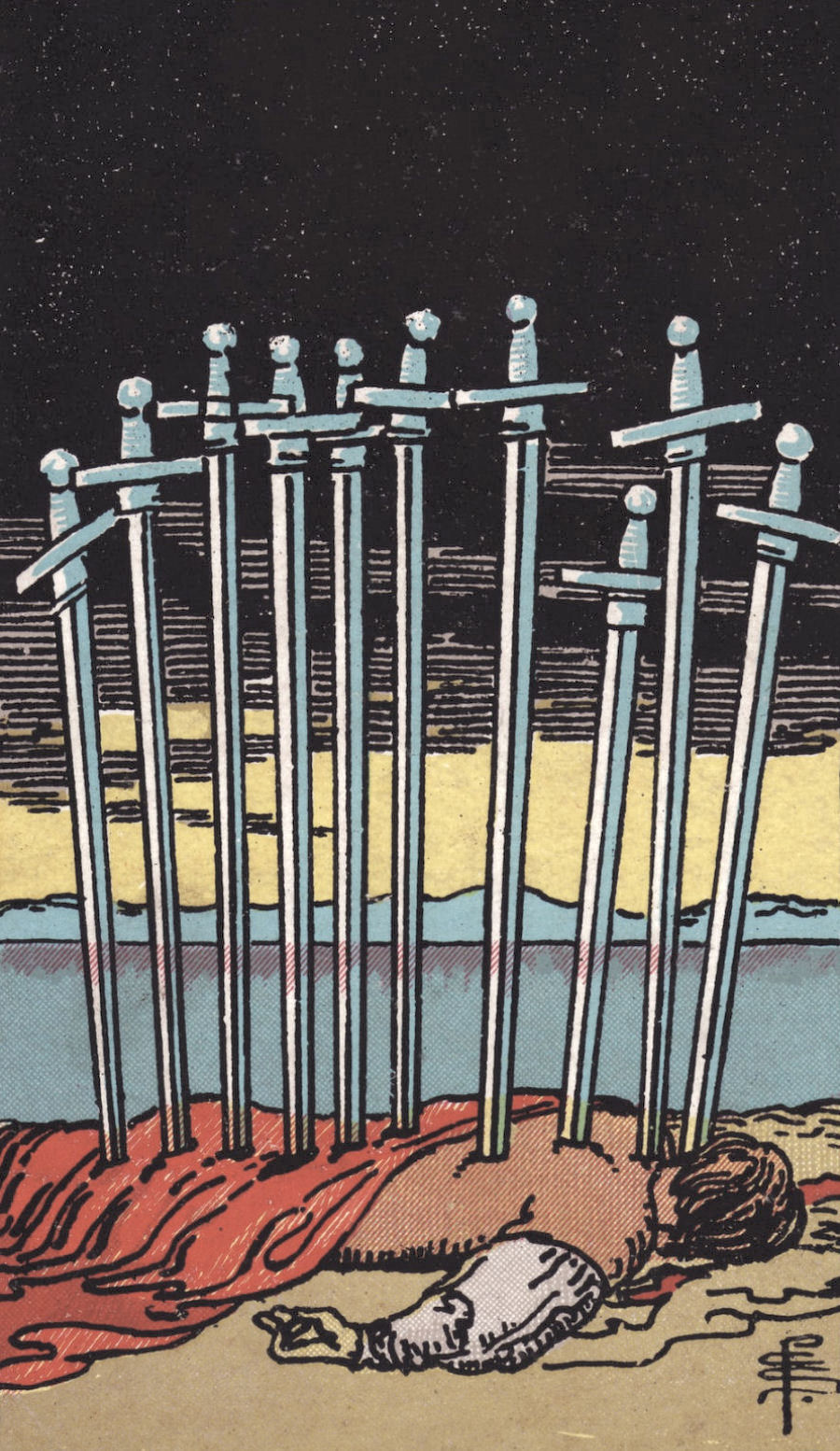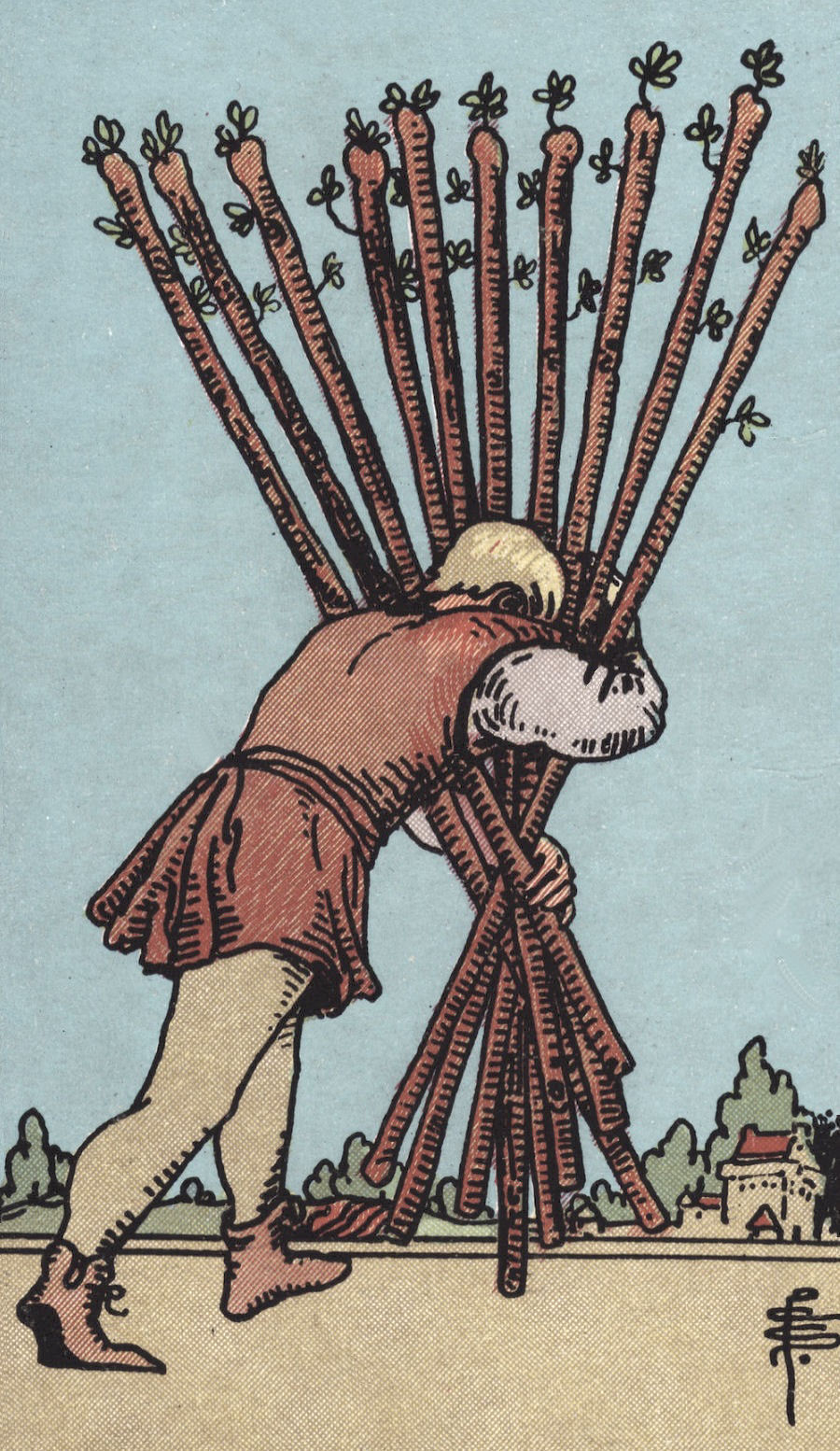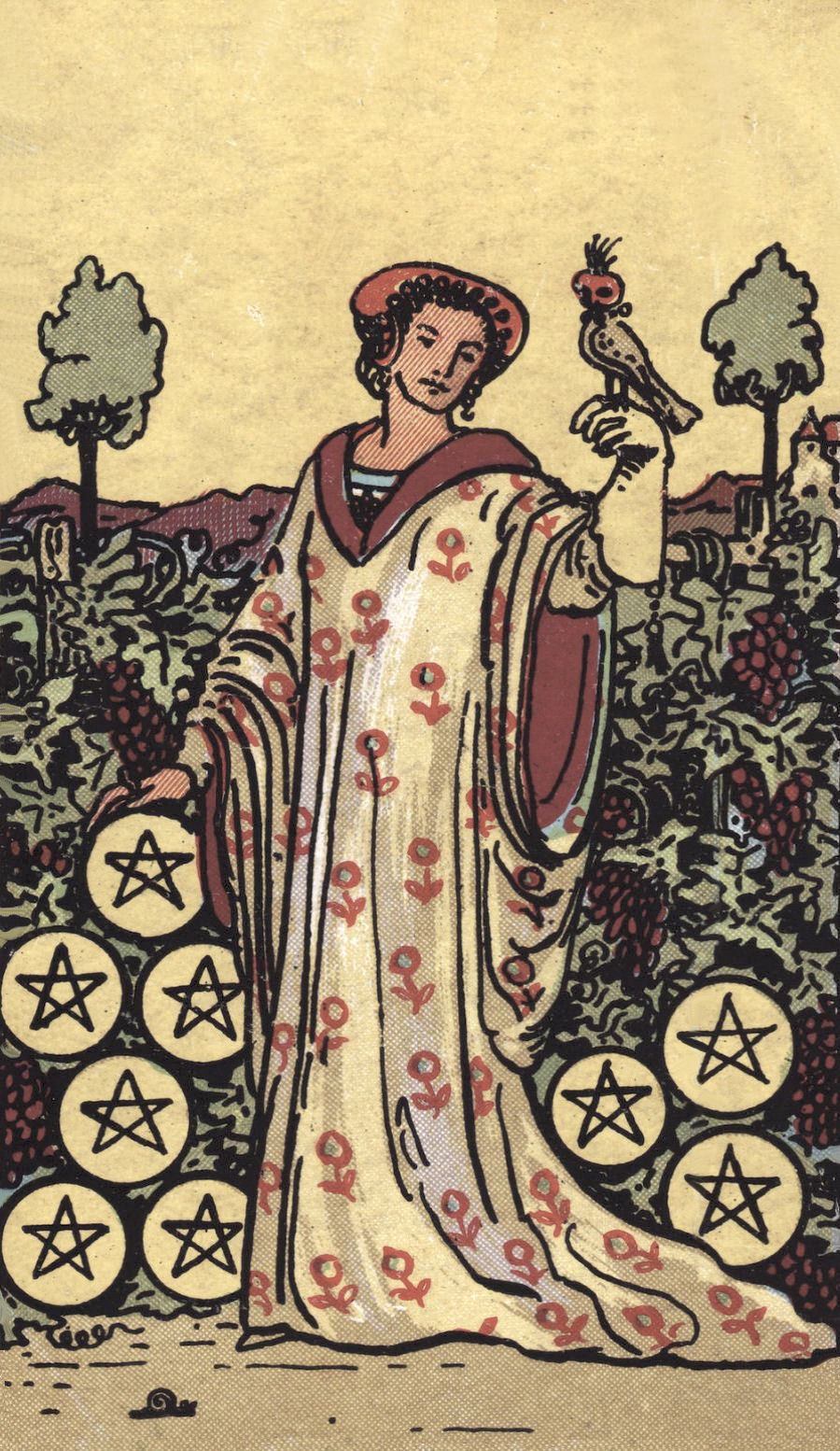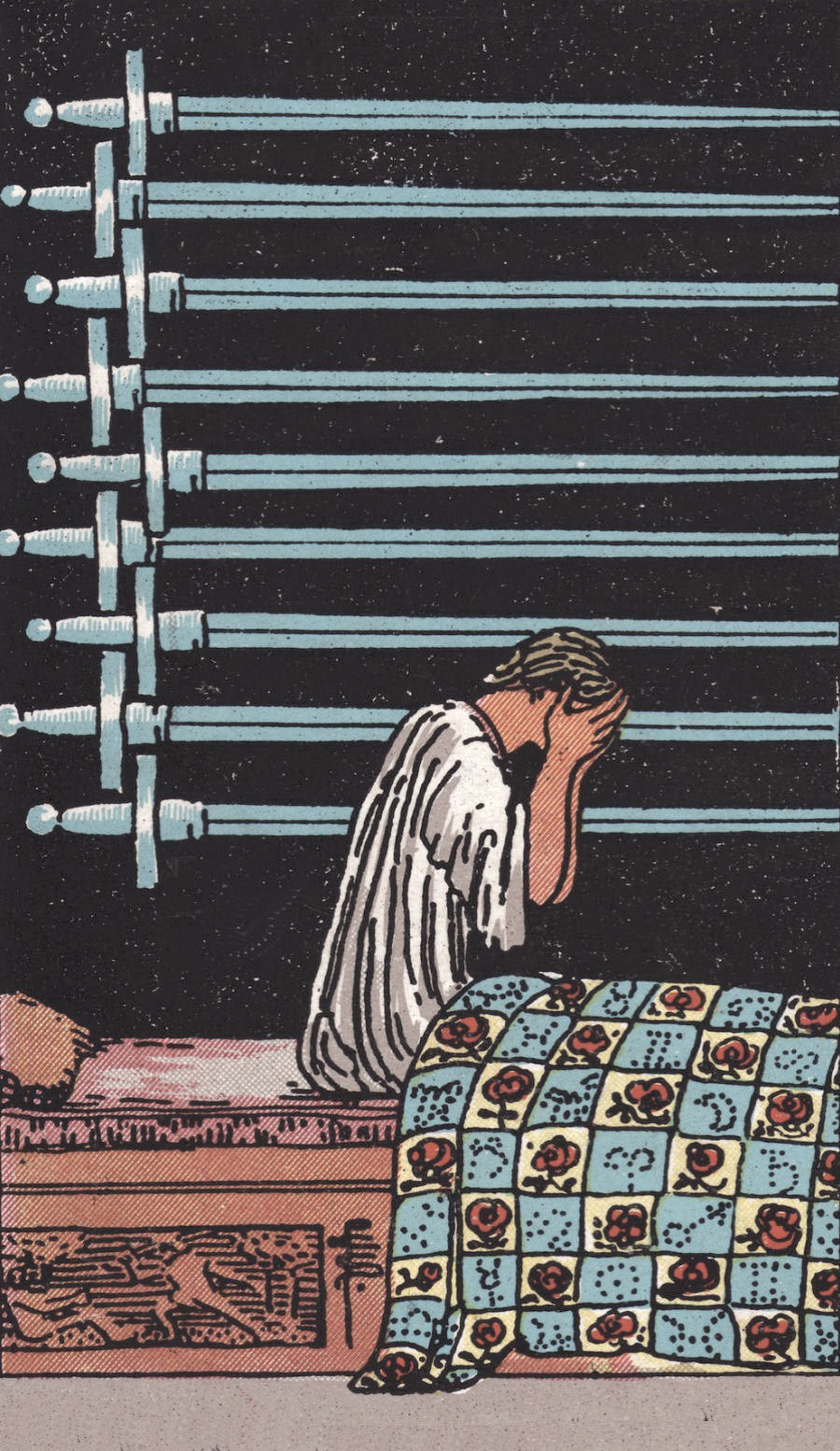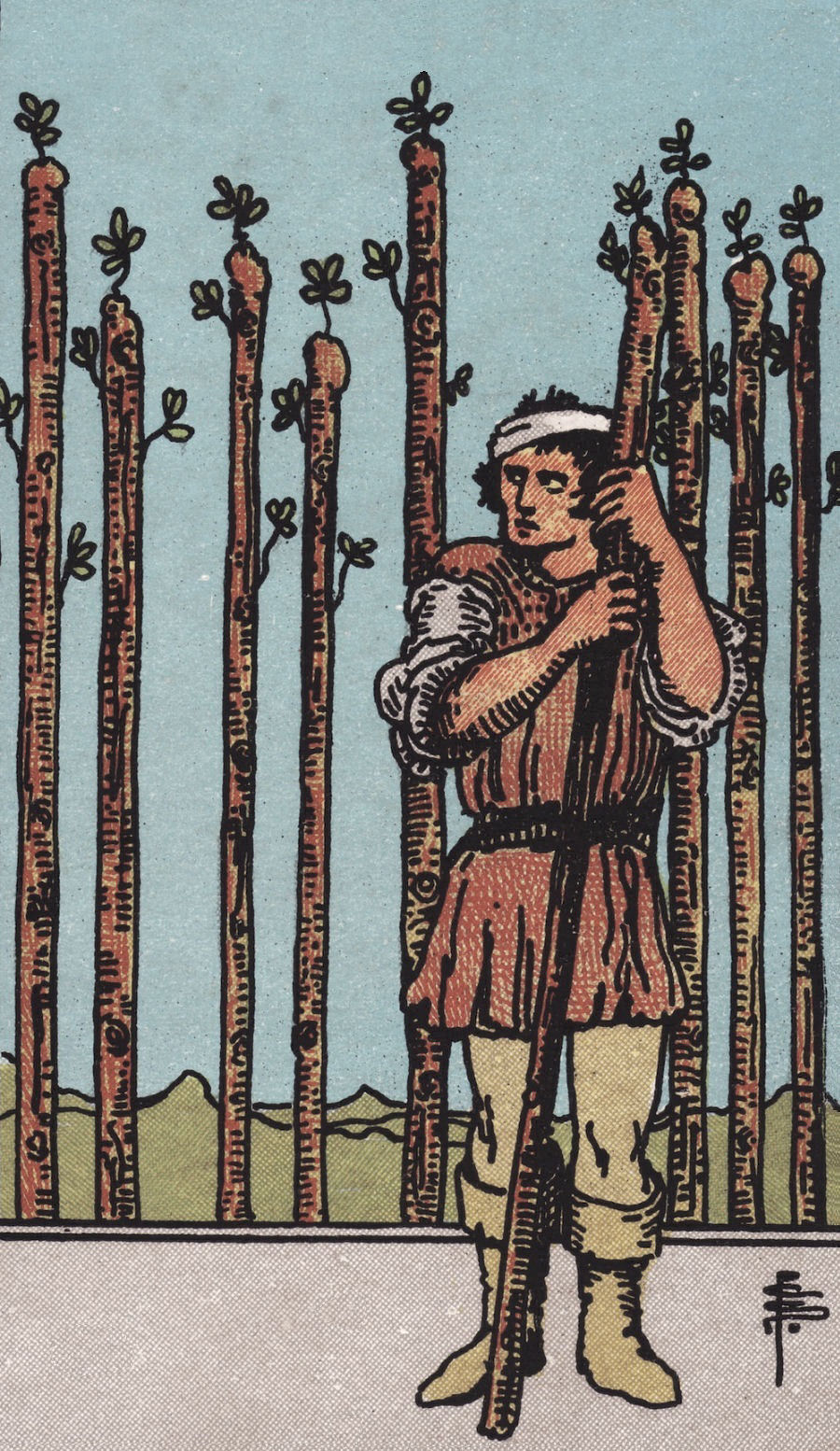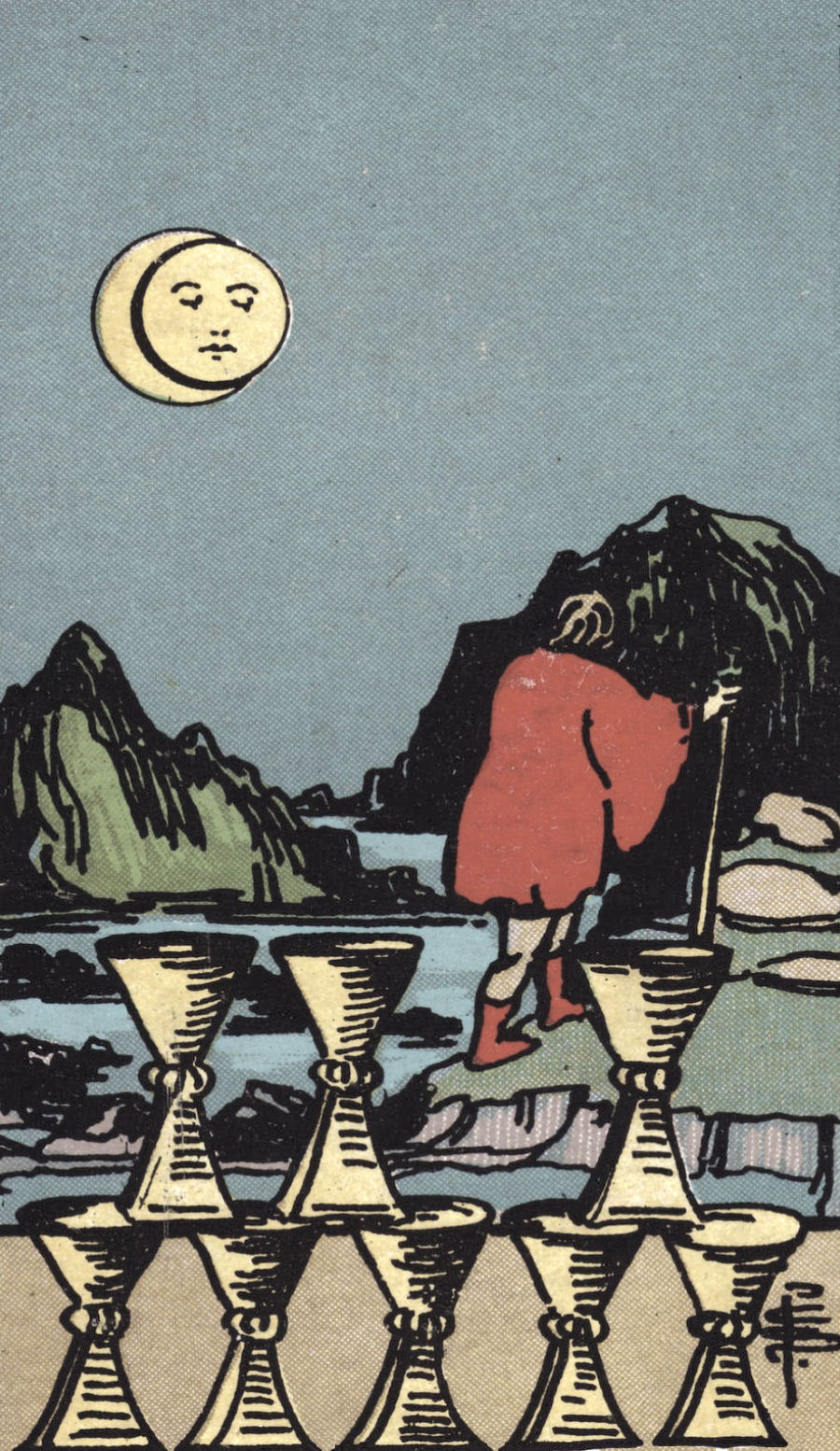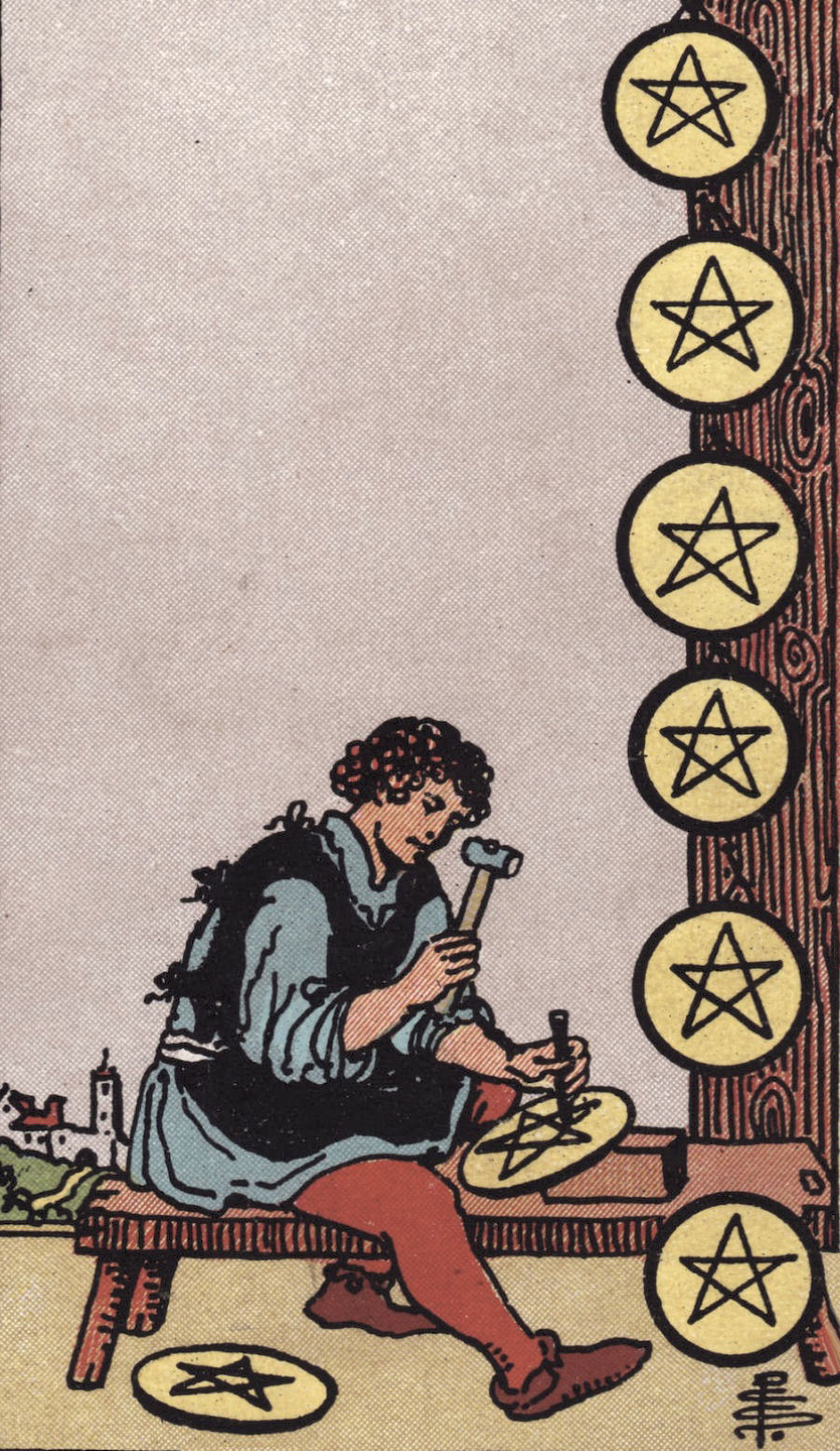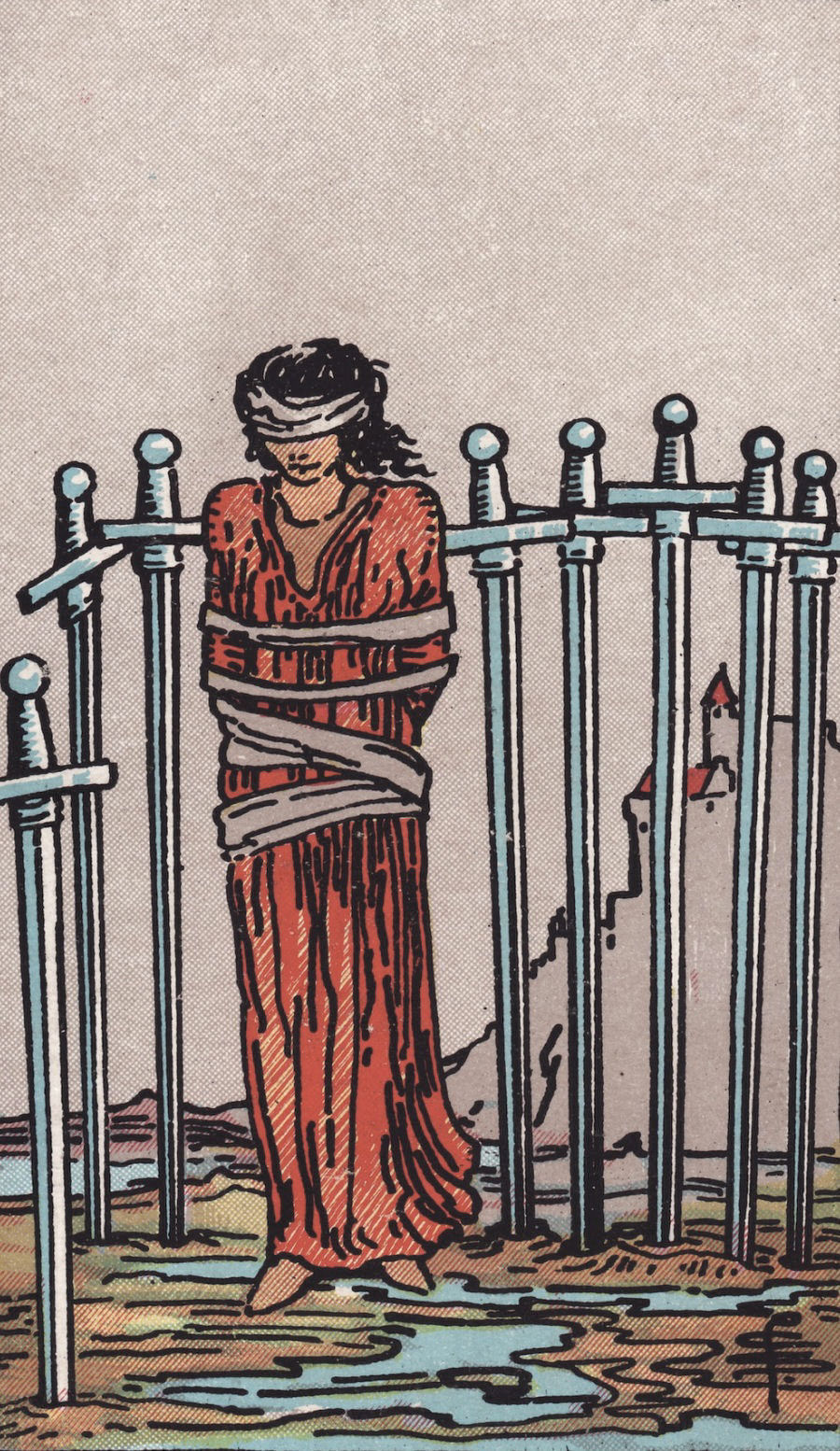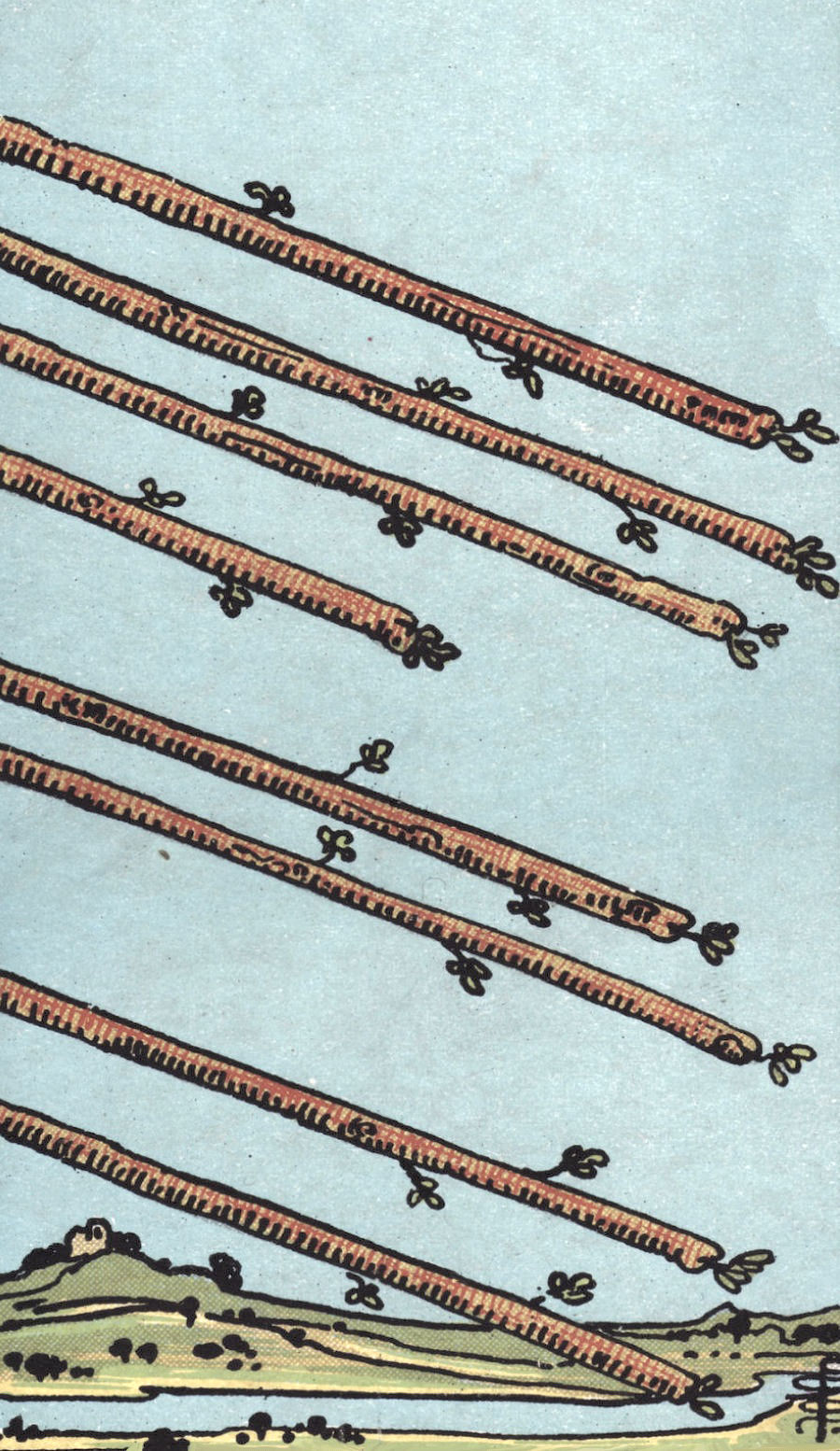Try This: Thrift Store Tarot
I've been reading a wonderful book by Robert Moss called Sidewalk Oracles: Playing with Signs, Symbols, and Synchronicities in Everyday Life. In it, Moss explores the ways in which we can engage with the world to find meaning, spiritual guidance, and richness. It's a theme that obviously resonates with me, both as a tarot reader and a seeker. Indeed, there are many similarities between Moss' approach and tarot. We use the cards to identify patterns and symbols in our lives. Why not extend this gaze outwards?
Photo by Charisse Kenion on Unsplash
I've been reading a wonderful book by Robert Moss called Sidewalk Oracles: Playing with Signs, Symbols, and Synchronicities in Everyday Life. In it, Moss explores the ways in which we can engage with the world to find meaning, spiritual guidance, and richness. It's a theme that obviously resonates with me, both as a tarot reader and a seeker. Indeed, there are many similarities between Moss' approach and tarot. We use the cards to identify patterns and symbols in our lives. Why not extend this gaze outwards?
I was delighted to find out that Moss is also a fan of the tarot. Early in the book he introduces the idea of "Sidewalk Tarot," the practice of posing a question or theme to the world and seeing what signs come your way. I've been practicing this frequently and have been enjoying the expansive curiosity it brings to my awareness. Now I'm seeing things I'd never notice before, paying attention to the sights, sounds, and snippets of conversation that flow around me.
It's also inspired me to adapt Moss' idea to one of my favorite pass-times: thrifting. Since my college days I've spent days perusing the racks and shelves of all sorts of thrifty places: swap shops, antique stores, and the bevy of secondhand shops in Durham (including the incredibly named "Everything But Grannie's Panties.")
I find browsing for treasures uniquely calming. I can relax into myself and satisfy that primordial hunter-gatherer instinct. Instead of mammoths, I'm looking for bakelite jewelry, vintage dresses, and all manners of delightful doo-dads. Or scary/delightful doo-dads: I have a huge soft spot for demonic-looking ceramic animals like this bluebird sugar dish. What can I say, I'm a woman of many interests.
And now I can add "mystical insights" to my wishlist. I decided to try out Moss' technique in a thrift shop because, if you think about it, what place is more chock-full of symbols? You have the meanings of all manner of figurines, the associations that come from different eras, memories awakened by poufy-sleeved dresses from the 80s, and words upon words in stacks of books.
The rules are simple. Post a question or set an intention like "what do I need to know about ____" or "show me insight into _____" before you enter the store. Let yourself get swept into the meditative task of browsing. Don't try to force associations or observations. Think of this as shuffling the tarot deck. Wander around a while, touch some blouses, and flip through some books.
Once in this relaxed state, notice what you're drawn to and don't overthink it. Whatever item or memory or insight sticks out the most is the most important. Jot these down in a notebook, snap a photo, or commit them to memory.
After you've left the store, take a moment to journal about your experience. What messages might these observations or items be telling you? Let them percolate and see what you discover!
How to Shuffle Tarot Cards
It's where all readings start: with a nice shuffle. But how do you do it? This part of reading is so fundamental it often goes unmentioned. And add some tricky elements unique to tarot like the fear of doing it wrong or difficulty maneuvering the larger-than-normal deck and you have a topic that definitely deserves some more attention!
It's where all readings start: with a nice shuffle. But how do you do it? This part of reading is so fundamental it often goes unmentioned. And add some tricky elements unique to tarot like the fear of doing it wrong or difficulty maneuvering the larger-than-normal deck and you have a topic that definitely deserves some more attention!
Below I'll go into some techniques for shuffling your deck, but before I do I'd like to focus on the "why" behind shuffling the cards. At its most simple, shuffling is an act that bonds you to the deck and infuses your energy into the reading. By handling the cards we step into their space, allowing the conversation between the tarot cards and the tarot reader to begin.
Shuffling is a special time to contemplate your question or topic, interact physically, emotionally, and spiritually (if that's part of your beliefs) with the cards. I like to use this moment to officially begin my readings, being mindful as I shift from everyday life into the world of tarot through this simple and powerful ritual.
With that being said, let's get to the mechanics! There are many ways to shuffle the cards and, in my opinion, no wrong way to shuffle the deck. We all have our own techniques and methods. I've seen many styles from reading at events (I like to have my clients handle the deck themselves) ranging from gentle rearranging to vigorous pile-making. One client at an event called "Goth Prom" was very forceful, slamming each pile down with a bang after they shuffled. (Unsurprisingly, this was not a favorite approach of mine!)
Experiment with these approaches or invent your own. You'll know what feels best to you. And a quick note: it's completely normal to be slightly awkward at first. Most tarot decks are larger than a standard deck of playing cards. It takes practice to wield them gracefully.
As for disrespecting the cards? We all forge our own special relationships with tarot. It all comes down to intent. Reading tarot with a cavalier, rude attitude? That's disrespectful. Approaching it as a helpful and special tool? You're fine, even if you manage to drop your deck all over the floor, as I've done many times throughout my time as a reader. If your intentions are good, you're golden.
And now for all you need to know about shuffling your tarot cards...
4 Ways to Shuffle Tarot Cards
- The Classic: You know this one. It's the ye-olde shuffle where you divide the deck in two and flick the piles downward so they interweave. You can get fancy and do a complete bridge shuffle here if you'd like. It can take a while to get a hang with this method when using tarot decks, but it's a lovely go-to for quickly integrating the cards.
- Spreading and Regrouping: This method looks nice and evocative. Fan out your cards on the table any way you like. I sometimes do an "S" pattern purely for aesthetics. Why not be fancy about it? Gather up your pile again, making sure to recombine in a different pattern.
- Pile-Style: Divide your deck into a series of small piles. Have fun putting them back together in a different order, either as they are or by shuffling pairs together until the whole deck is integrated.
- Handheld Shuffle: This method is as simple as dividing out segments of the cards in your hands and placing them back in the deck at a different spot. You can really get in the zone while doing this and it's a comforting technique to use when you'd like to meditatively handle the cards before your readings.
I hope this post has been helpful for your tarot-shuffling needs. Remember, finding your own style is an integral part of your tarot journey. Play with these methods and allow yourself to settled into what feels natural. And don't forget to share your method, too!
What about you? What techniques do you use in your practice? What else would you like to know about shuffling the cards? Share in the comments below.
Taking a Break from Tarot
Like everything in life, practicing tarot is cyclical. Sometimes you're fascinated with the cards: feeling drawn to pull on every morning, doing reading for anyone and everyone, or spending nights alone interpreting intricate personal readings.
And sometimes the cards just aren't calling to you.
Like everything in life, practicing tarot is cyclical. Sometimes you're fascinated with the cards: feeling drawn to pull on every morning, doing reading for anyone and everyone, or spending nights alone interpreting intricate personal readings.
And sometimes the cards just aren't calling to you.
When I was in college I had a strange way of writing papers. I'd start out in a frenzy of research, stockpiling books and pouring over articles. It was an exhilarating hunt (and full of reading - lots and lots of reading). And then I'd just stop. Walking around campus, daydreaming as I rode the bus back to my apartment, I'd put all the piles of books to the side and turn off the computer. I needed to get out in the world, read a book about something fascinating and decidedly un-academic. Hell, I'd even take baths and pour over wrinkled copies of UsWeekly, a habit I still have today.
And yet I had a deep feeling that while I stepped away from the process of creating and studying, another process was unfolding. It was as if the paper was slowly forming in my subconscious. When I finally sat down to write, the words came out quickly and with clarity I couldn't muster in the days before.
I think the same process is at work in tarot. Spending too much time engrossed in the cards detaches us from the world around us. I can tell when I need to go out and collect some magic, or simply let my tarot experiences rest and percolate. Give yourself the freedom to follow your own tarot cycles and trust that the cards will call to you when you're ready to come back.
What to Do When a Card Just Doesn't Make Sense
We've all been there before. You've laid out a big, beautiful reading and things are flowing along smoothly. All the cards seem to be telling a wonderful and cohesive story, connecting easily to each other and forming illuminating patterns. And then it happens.
One card just. doesn't. make. sense. The ease and rhythm of your reading is completely thrown off. Where the words once came easily now there's... nothing. What do you do?
This scenario fills a lot of us with fear. Why isn't this card behaving? What can't we see? Why aren't we able to pull on our knowledge to make things clear?
We've all been there before. You've laid out a big, beautiful reading and things are flowing along smoothly. All the cards seem to be telling a wonderful and cohesive story, connecting easily to each other and forming illuminating patterns. And then it happens.
One card just. doesn't. make. sense. The ease and rhythm of your reading is completely thrown off. Where the words once came easily now there's... nothing. What do you do?
This scenario fills a lot of us with fear. Why isn't this card behaving? What can't we see? Why aren't we able to pull on our knowledge to make things clear?
These hiccups happen to the best of us, no matter how much memorizing and practicing we do. But before you despair, I'd like to invite you to reframe the situation a little bit.
What if the card throwing you off is trying to tell you something important, something different? What if it's being tricky for a reason?
In my personal practice, I've found that these cards are a quick check on our ego as well as a gateway into a deeper facet of a situation. Their meaning isn't instantly clear because it requires some more work and finesse to get to the core message. As with most things, the hard work is usually worth it.
But back to that flustering, out-of-sync moment. I don't want to gloss over how unnerving it can be to find yourself at a loss for words, especially when you're reading for another person. (Sometimes, drawing a blank on a tarot card can also be as simple as a matter of stage fright.) Below I've compiled some tips for how to move beyond this moment, whether it's a matter of forgetting, nervousness, or simply being at a loss for how the card connects to the larger reading.
I hope these are helpful as you navigate similar situations. And above all, remember to breathe, be kind to yourself, and take these moments as invitations to dive deeper into the cards.
How to Deal with Confusing Tarot Cards
Take a Moment to Center - Before you move into a state of panic, take a quick breath or two to reconnect with yourself and the present moment. Remember, the stakes aren't high, and a tarot reading is as much an exploration as it is a message. Being in-control and certain 100% doesn't make for nuanced, illuminating, and intuitive readings!
Ask the Card What it Means - Look deeper into the card without consulting the rest of the reading to delve into its nuances. Let the rest of the cards fall to the wayside and imagine that you're doing a reading on the same question with just one card and voila! you've drawn your problem card. What message does it portray when viewed alone? Let your intuition lead the way and reintroduce the rest of the cards when you feel confident.
Start by Describing the Card - This technique is an oldie and a goodie and is especially helpful when reading for another person. Begin by describing the card out loud. For example, with the Four of Cups you might say, "A person is sitting beneath a tree with their arms crossed, gazing at three cups. They look bored and detached..." This exercise helps bring up any meanings and associations you may have forgotten in the heat of the moment and brings you back into the flow of the reading.
Explore Why it's Different - Take a closer look at the card. Is it making you draw a blank because it doesn't fit in with the rest of the reading? If so, look at how it differs from the rest. Could it be a warning? A new direction to move towards? A helpful attitude to embrace? In this case, the card's difficulty can point towards its meaning.
Check-In with Biases, Fears, and Resistances - Is there something about this card that puts you on edge? It could simply be a card you don't resonate with naturally or one that brings up bad memories and incompatible concepts. (I'm thinking authoritarian cards like The Emperor or cataclysmic ones like The Tower) Bring all these associations into your mind and then let them go. Swipe them to the side! Say goodbye! See what the card says to you without all this baggage. Is there a new message or meaning that's now visible?
Draw a Clarifying Card - I like to use this as a last resort, since it's easy to go overboard. This technique is helpful in situations where the tricky card seems to be missing information or only telling part of a story. Limit yourself to one card and place it next to the card that's giving you trouble. It's meaning is solely to illuminate more about the first card. Let the two form a dialogue and fill in any gaps of your understanding.
Accept the Unknown - If, after you've tried the steps above, the card is still being resistant, give it some time. I've found that in these cases the card needs extra time and space to reveal its meaning. Usually it unfolds in quite a memorable way, so be patient and see what arises as you go about your normal life. This is just another part of tarot's mysterious nature. Similarly, you can now look to this card for inspiration in your future actions. How might you act to better understand the perspective or message of the card you drew?
I hope these techniques help you when you find yourself with a card that just doesn't make sense. Above all, don't worry too much - this happens to the best of us, so welcome to the club! If anything, these cards are reminders that there's always something new to experience with the cards.
How about you? What has your experience been with tricky cards? Do you have any techniques that help you through these moments? Please share in the comments below!
Tarot Tip: Making a Sentence with Your Cards
Have you ever felt pulled in multiple directions when you first turn over the cards? You might find yourself debating what to process first: the Major Arcana cards vs the minors? Court card pairs? Numbers? Suits?
It's easy to get sucked into the details of a reading before you get a chance to articulate your first impression. Lately I've found myself creating a sentence from the cards before diving into the details. It's been such a wonderful breath of fresh air that I thought I'd share the practice with you.
It all started with the Weekly Forecasts. I love writing these, and whenever I turn the cards over I take a moment to digest the overall feeling of the reading. When I started to write, a lovely single sentence would emerge, stringing all three cards together. As I wrote more, I'd look back to this "tarot thesis statement" to guide my interpretations.
Reading tarot can be a wild and winding experience. It's heady stuff! Each card relates to the others and the web can get tangled quickly. I've found that making a sentence gives me something to look back on, guiding my reading and providing a point of reference as I work through the details.
It's as simple as it sounds, and I've found that going with my first impression is the quickest path towards something that sounds clear and true. Try to avoid any second guessing, hemming and hawing, or desire for perfection. Let your inspiration flow freely!
I tend to start with an action or description of each card, followed by the general meaning - the theme that ties all the cards together.
For example, let's look at the reading below:
First things first, let's look at each card and find a theme for each:
The Empress: Emotional stability and plenty
Eight of Cups: A journey for more
Ace of Wands: Receiving inspiration and new creative opportunities
Now, let's use the descriptions above to uncover a unifying theme. Think of this as the story you're telling with the cards:
Emotional stability inspring and allowing for a journey towards exuberant growth.
And that's it! As the reading progresses, we can dive into the details of each card more thoroughly, tackling, for example, the bravery inherent in the journey of the Eight of Cups or the power behind The Empress' motivations.
And whenever we feel lost, we can return to our sentence to guide us back to clarity.
How about you? How do you look at the cards as soon as you flip them over? What ways do you use to focus your readings? Please share in the comments below - I'd love to hear from you!
Exploring the Minor Arcana: The Tens
In this series we'll be diving into the world of the Minor Arcana. Each segment will group the cards by number where we can engage in their themes and differences. For all the posts in the installment, click here.
I can hardly believe we've made it to the end of the numbered cards in the Minor Arcana! It's been an illuminating journey, and what better place to conclude this portion than with the bustling, detailed tens?
These cards signify the conclusion of a cycle, event, or undertaking. Because of this they represent both an end as well as the early stages of a new beginning. (I love the image of this in the number ten itself, with one being the singular accomplishment and zero being the seed that's yet to sprout.) It's already a lot to pack into one card, but as we can see from the images above, the tens are full of happenings and meanings.
I like to think of the tens using "the 3 C's" (and, yes, I do realize that's imminentely cheesy!): culmination, completion, and complexity. Tens represent the maximum expression of the suit - all the events, experiences, and lessons in one card. This can be heavy and overwhelming, like in the wands and swords, or joyous and full like the cups and pentacles.
Let's dive into the details for each suit. Click on each for the full card meaning page.
Explore In-Depth Minor Arcana Meanings
The Ten of Wands illustrates the overwhelm that comes with a pile-up of work, obligations, and tasks. Struggling forward with ten sticks obscuring your view is both difficult and disorienting. This card can either be a breaking point - where one or more tasks must be put down in order to continue - or a final push to the finish line.
For the Ten of Swords shows us how it's impossible to avoid our feelings. Hurt, fear, overwhelm, and doubt will catch up with us, not matter how hard we try to run. This goes for personal issues and external events. In occupying this dire-looking space we also acknowledge an end and with that comes the rising sun - a new day - to begin anew.
The Ten of Cups shows us how family, commnity, and romance can bring incredible amounts of joy into our lives. This card, a picture of domestic bliss, shows good energy radiating outwards. Caring for and celebrating connection bring even more good fortune our way. This card also illustrates the happiness that comes from domestic stability rooted in emotional connectedness.
Finally, the Ten of Pentacles gives us a beautiful depiction of the richness that comes from creating and caring for our physical world. This card speaks to the work and understanding that goes into creating a space meant to foster our growth and the growth of those close to us. Life explodes in a riot of color, connectedness, and complexity. It's rich and wild, deep and meaningful, and uniquely our own.
How do the tens speak to you in your tarot practice? Which ten do you relate to most? I'd love to hear your takes, so share away in the comment section below! And stay tuned for our next section of card meanings - the court cards! I'm excited to dive into these sometimes tricky, always illuminating cards with you.
Learning Tarot: "When Will I Memorize All These Cards???"
So you've just started learning tarot. The images and symbols are fascinating and you're captivated potential for self-discovery and exploration. The cards look somewhat familiar, kind of like a deck of playing cards. But wait - there's twenty two more cards, plus extra court cards? "How on earth will I memorize all this?" you might ask.
Sitting down before a full deck of tarot cards can be daunting when you're first learning. I've been there - you want to jump right in and do lots of readings! Without having to consult the book (or books and websites) you've been reading. Add to that the many different interpretations for each card and we have a recipe for overwhelm.
But before you get frustrated I want to let you in on a little secret. I've been reading tarot for over half my life now and I still don't know all the meaning to the cards. Of course I'm proficient in each and can string them together in a plethora of ways, but I will never know everything about tarot. And want to know something else? That's what I love most about it.
Tarot is both a system of divination with a rich history and a constantly growing field. Meanings are created, shed, and reformed constantly. The topography is always changing and each reader discovers new meanings and connections throughout their practice.
You might be thinking, "well, thanks, that's not reassuring at all," and I get that. Tarot's fluid nature can be frustrating, especially since we're used to certainty and mastery. We're accustomed to having someone plop a few books down in front of us, give us a clearly outlined course of study, and, once we've grasped all of that, provide us with a diploma or certification at the end.
I'd like to invite you to step away from this framework when it comes to your tarot studies. There's something comforting in the endless potential in the cards. It's not our goal to be come the absolute expert of tarot (besides, that's impossible), but to become fluent in its language. Embracing tarot as a journey can be immensely freeing. It's not our goal to memorize ourselves into expertise, but rather to be open to all forms of meanings - traditional, esoteric, intuitive, and personal - and engage with tarot in the moment, as an art form and not rote memorization.
In other words, we can free ourselves from the expectation that we'll "know it all," especially when we start learning. Without this baggage of expectation, it's a lot easier to explore and have fun when we approach the cards.
I also think this opens us up to experimentation. Sure, book leaning is richly rewarding, but it doesn't touch the true depth of tarot readings. That only comes through practice. Supplement your studies with real life readings, whether they're for yourself, others, or both. You'll be surprised to find that your familiarity with the cards grows quickly this way, even without you realizing it. Think of it as the experience of reading "six of cups: nostalgia, warm feelings, tender relationships," in a book versus having the card come up for a friend reconnecting with their childhood confidant. I bet the second will stay with you much longer, giving you an experience to tie the meaning of the card to as you read in other situations.
So relax and open yourself up to the ever-expanding world of opportunity within tarot. You'll become comfortable with each and every card in the deck over time. Until then, engage with them creatively, using both books and your own experiences. If I can say one thing about tarot it's that it's never boring. You have a lifetime worth of discovery ahead of you so throw the pressure and desire to rush forward out the window and relax into the exciting world of the cards.
Exploring the Minor Arcana: The Nines
In this series we'll be diving into the world of the Minor Arcana. Each segment will group the cards by number where we can engage in their themes and differences. For all the posts in the installment, click here.
We've almost reached the finish line with the pip cards and, similarly, the nines represent the penultimate step of a journey. For some suits like the cups and pentacles, it's smooth sailing to the end. Others, like the swords and the wands, are more of a challenge. A trial of sorts is necessary to make it to a conclusion.
Nines require deeper thinking and wider vistas. It's a stage where we're synthesizing information, contemplating how far we've come, and realizing the extent to which we've changed. As a number, nine is visionary, conscientious, and universal. It's a point where we look beyond ourselves to the larger meaning and reverberations of our actions.
Let's dive into the details for each suit. Click on each for the full card meaning page.
Explore In-Depth Minor Arcana Meanings
The Nine of Wands shows us how the path of action can leave us bruised and wary. The going has been rough, but not without wisdom and accomplishment. It just doesn't look so rosy quite yet, and this card denotes a resigned restlessness. We know tha we've committed to a journey and we'll see it out, but there's tiredness in our bones and a desire to let go and move on once we've succeeded.
For the Nine of Swords depicts a moment of intense anxiety, sadness, and doubt. We've been overwhelmed by our mind's tendency to think, plan, and fret. We'd like to retreat, but instead of using this space to heal and recover, we dissolve in despair.
The Nine of Cups is a beautiful illustration of the wealth that comes with emotional fulfillment. The figure in this card sits confidently in front of nine cups fanned out behind him. Contentment, generosity, and warmth spring forth naturally when we're able to take care of our emotional needs, feel our feelings, and maintain supportive and loving connections
Finally, the Nine of Pentacles is a very alluring card. Ensconced in a beautiful garden and lounding next to a grapevine with pentacles at its base, the figure in this card is majestic, content, and secure. This card denotes a period of financial and material stability, one that allows us to invite others into our space and share our wealth.
Exploring the Minor Arcana: The Eights
In this series we'll be diving into the world of the Minor Arcana. Each segment will group the cards by number where we can engage in their themes and differences. For all the posts in the installment, click here.
If the eights could be described in one word it would be "action." These cards illustrate moments of dedication, movement, and commitment. Often growth-oriented, the eights show us how deciding to put our noses down and do the work can be in turns satisfying, galvanizing, and intimidating.
Eights also have an entrepreneurial bent - they relish using their surroundings to their advantage and have a savvy way of negotiating with the world. In readings, eights are an indication of a path nearing conclusion that could benefit from work and focus. Below we'll look at each suit in depth.
Explore In-Depth Minor Arcana Meanings
The Eight of Wands gives us one of the most visually straightforward illustrations in the deck. Eight budding wands descending through a vivid blue sky. There's not a cloud in sight, indicating smooth sailing, quick-moving action, and plenty of creative inspiration and motivation. This is a card that sees energy unleashed constructively and with no obstacles.
For the Eight of Swords is quite different. This card shows us the paralysis that comes with overthinking. The figure in the card is fenced in by a line of swords, bound and blindfolded despite the many sharp edges available to sever the ties. When we worry too much or fall into the overwhelming possibilities of our choices we lose sight of the end goal and even ourselves.
The Eight of Cups shows a profound emotional journey. The main figure in this card is leaving behind a row of upturned cups, heading up a jagged mountain pass under the light of the moon. The action in this card is personal, pioneering, and brave. It shows us an inward search for new sources of fulfillment.
Finally, the Eight of Pentacles gets practical, as pentacles are known to do. Here we see a literal representation of work. The main character here is busy hammering away at a pentacle, the tree besides him decorated with those they've completed. This card shows us the pleasure that comes with being in the flow when we work, as well as the big strides we're capable of when we remain focused.
All in all, we can see that the eights show us pivotal moments where we're being asked to commit to a task and be present with ourselves, whether it's through our love of work or our nervousness when faced with decisions.









